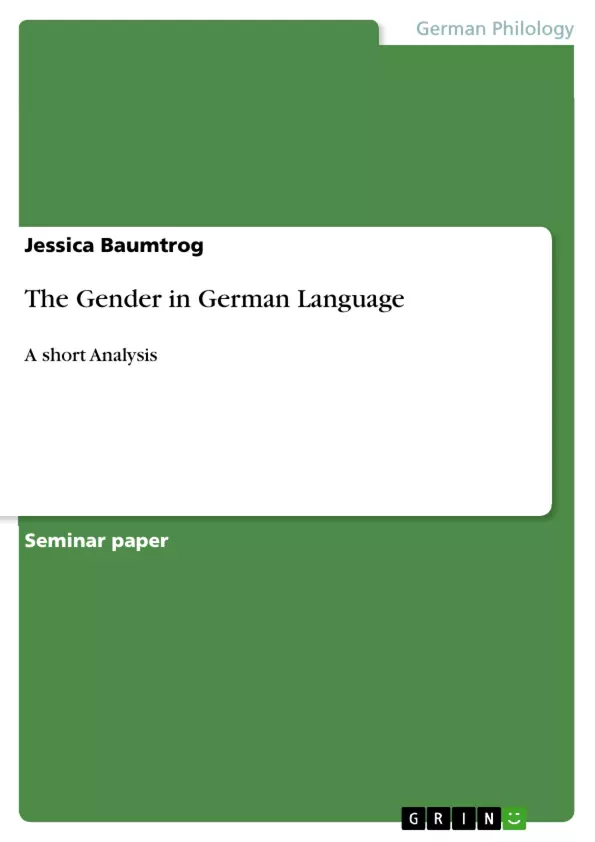The assignment tells about the gender in the German language. In comparison to the English language there are three different classes of nouns used in the German language. This paper gives a survey of the gender in German and explains how it is used. We will examine the historical aspects and some grammatical aspects. Furthermore, there will be examples for varying regional applications of the articles in the German-speaking land. Even native speakers have problems with the right using of the articles, that is why this paper is not only interesting for those, who want to learn more about the German language, but also for native speakers.
Inhaltsverzeichnis (Table of Contents)
- Introduction
- General
- Definition
- Gender versus Sex
- Development
- The three classes of nouns
- Characteristics
- Utilisation in sentences
- Regional Differences
- Example 1: der/die Butter
- Example 2: der/das Teller
- Conclusion
Zielsetzung und Themenschwerpunkte (Objectives and Key Themes)
This paper explores the concept of gender in the German language, comparing it to the English language. The aim is to provide a comprehensive overview of the history and usage of gender in German, highlighting its unique features and complexities. The paper examines the three classes of nouns in German, their characteristics, and their use in sentences. It also explores regional variations in the application of articles, demonstrating that even native speakers sometimes struggle with the correct usage.
- The historical development of gender in the German language
- The three classes of nouns in German (masculine, feminine, and neuter)
- The rules and conventions governing the usage of articles in German
- The impact of regional differences on the application of articles
- The distinction between grammatical gender and biological sex
Zusammenfassung der Kapitel (Chapter Summaries)
The introduction provides context for the paper, highlighting the importance of understanding gender in different languages. It emphasizes the significance of gender in the German language, its historical development, and its impact on grammar. The "General" section defines gender and explains the distinction between gender and sex, demonstrating the grammatical nature of gender and its importance in classifying nouns. The chapter "Development" likely explores the evolution of gender in the German language, tracing its historical roots and outlining significant changes over time. The chapter "The three classes of nouns" delves into the three categories of nouns in German, examining their characteristics, usage in sentences, and the specific rules governing their application. This section likely includes examples illustrating the proper use of articles and the differences between masculine, feminine, and neuter nouns. The section "Regional Differences" focuses on regional variations in the use of articles, illustrating how these variations can affect language comprehension and the application of grammatical rules. The paper likely examines specific examples to illustrate the impact of regional differences and the challenges they pose for both learners and native speakers.
Schlüsselwörter (Keywords)
The main keywords and focus topics of the paper include German language, grammatical gender, noun classes, article usage, regional variations, historical development, and gender versus sex. These key terms encapsulate the central themes and concepts explored in the paper, highlighting the research focus on the intricacies of gender in the German language.
- Quote paper
- Jessica Baumtrog (Author), 2016, The Gender in German Language, Munich, GRIN Verlag, https://www.grin.com/document/981210



